How to harvest worm castings is a question we get quite frequently. Harvesting worm castings is not some big secret
“VooDoo Technique” that only a few people know how to do. Worm castings harvest is actually very easy to do with the
right tools.
There are other considerations in play though. Many times we are not just harvesting the worm castings. We are also trying to harvest the worms and catch cocoons. There are tools available to do all of this quickly and efficiently.
We are going to talk about some of these tools. We will show some of the systems that the big commercial worm farms use to harvest castings, worms, and cocoons.
Secondly, we will talk about more affordable tools that mid-level worm producers use in their businesses. Lastly, we will talk about some of the smaller and cheaper options that the home hobby worm farmers can use to make the harvesting process easier.
Worm castings harvest is a screening process whether you are small, medium, or big. Your bedding needs to be on the dry side because wet material clogs the screens. Some planning is crucial to insure that your bedding is dry enough for the harvesting process.
Large Commercial Worm Operations
Large commercial worm operations are pretty ingenious in the many ways they harvest worms and castings. This is by necessity. Large operations have large costs and need to be very efficient to make a profit.
There are basically two types of large worm operations. There are the worm castings producers that focus on making the best vermicast and marketing it to their customers.
Then there are the worm producers that primarily sell worms but will also sell worm castings. As you might guess, the harvesting equipment for these two types of operations, are very different.
The day-to-day worm operations of these two types of businesses are also quite different. There are also hybrids of both of these types of businesses and they have tailored their harvesting equipment to meet their needs.
Commercial Worm Castings Producers
Many of the large worm castings producers use some type of a continuous flow-through system (CFT) to efficiently produce castings.
The typical CFT is a bin that is 4-5 feet wide, 2-3 feet deep, and 8 to hundreds of feet long. The bottom is a screen (4 inch by 4 inch mesh is common) and has a cutter bar that pulls along the bottom to harvest an inch or two of worm castings.
The worms are fed on top and never disturbed. Some of these systems have conveyors to carry the castings away after harvest. They can then go through drying, screening, and bagging operations.
CFT Cutter Bar Assembly
Many of these CFT systems have hoppers that run along the top to lay down a couple inches of feed every few days. The food is usually from a single source (dairy manure is common) and is pre-composted.
The food, bedding, moisture, and temperature is tightly controlled. These producers have TONS of worms working and need to protect their financial investment. They also need to make a consistent product their customers can rely on.
For the most part, the worms and cocoons are never harvested from this system. The depth of the bin allows the cocoons to hatch and the small worms to migrate upward before the castings are harvested at the bottom.
Once the CFT is full, castings harvest can take place every few days. Some operations can produce tons of castings weekly.
This is a prime example of the harvesting equipment meeting the needs of the producer. The upfront investment for this type of business is large but it is very efficient and the labor costs are lessened.
Worm Sellers
The next kind of large-scale commercial operation is the worm sellers. These may be large bait-selling operations, composting worm sellers, or a combination of both.
Most probably sell their castings but their primary business is selling worms. Their day-to-day operations are much different from the castings producers.
Their worms are fed to grow and breed quickly. They may have separate breeding operations on-going to increase the size of their “herd”.
They have a need to quickly and efficiently harvest worms and cocoons. The castings are a by-product of their work.
Worm Sellers Go-To Harvesting Tool
The harvesting equipment they need is much different from a castings producer. Most worm sellers use a large rotary trommel that separates castings, cocoons, unprocessed material, and worms in that order.
Many of these large trommels are home-made to reduce cost, meet the producer’s needs, or both. There are also many good commercial models available for sale.
Photo courtesy of redwormcomposting.com
These trommels are all pretty similar. They are usually 6-12 feet long (some longer), sloped slightly downward (adjustable), rotate fairly slowly (adjustable), consist of two or more different sized screens along their length, and have a metal flared-bell end.
The way a trommel works is like this: You put the worms and bedding in the upper end, the trommel rotates and all the worms and material travel downhill on the screens.
The first screen lets the castings fall through, the second screen allows the cocoons to go through, and the worms and unprocessed material go through to the bell.
The unprocessed material goes straight out the end while the worms tend to stick to the bell and rotate over to the side before dropping out.
All in all, trommels are a very ingenious way to separate out worms, cocoons, and castings. The largest trommels can be several feet in diameter and very long.
The larger trommels can separate worms, cocoons, and castings quickly but can be injurious to the worms. Everything always has pros and cons and you have to figure out what works best for your operation.
Trommels are mostly large, hard to move around without equipment, and fairly expensive. New mid-size trommels are $5000 and up. Larger trommels can cost much more.
Mid-Size Worm Farmers
Mid-size worm farmers sell a few hundred pounds of worms a year, sell some castings, maybe sell some worm tea, you get the idea. They need some mechanical help to be efficient but don’t have big budgets. Sound familiar?
They have the same needs as the worm sellers but don’t have the budget for big equipment. There are small trommels available that work just as well as the large ones.
They just don’t process the material as fast. That is okay because they cost much less too. Many mid-size operations use small trommels that are either purchased or home-made.
These trommels are usually 4-8 feet in length and work just like the big boys. Albeit a little slower. Prices are about $2000 and up.
Worm Castings Shaker/Screeners
Mid-size guys also have another option. They can use what we call a “shaker/screener”. They would never work for the large operations but they are perfect for the mid-size operator.
The shaker/screeners have a screen box of some length (3-6 ft) with two size screens. The box is downward sloped and the screen box is open on the downhill end.
You dump your bedding at the top of the box, the screen is either vibrated or moved back and forth quickly (mechanical means), your castings fall through the upper screens, and your cocoons go through the lower screen.
The worms and unprocessed material fall out the end. You still have to separate the worms and unprocessed material but that is a reasonably easy task.
The UNCO bucket system uses a larger shaker screener for their program. Their participants can harvest thousands of 3 gallon buckets of worms and castings weekly.
Photo courtesy of Brockwood Farms
There are also some reasonably priced commercial options available. The Brockwood Worm Sh*fter comes to mind. This sifter starts at around $2700 and can process a good amount of material.
All The Little Guys
Everyone else! yes… YOU! Several hundred pounds of worms a year? Are you kidding? In my dreams!!! Don’t worry… all is not lost.
We have some solutions for you and it is not going to cost $2000.00. We know who you are because you are most of our customers.
You have a worm bin (or two), soon to be more.. right? And you want some castings for your garden and/or indoor plants.
Maybe you started by diverting landfill waste. Instead, you use your food waste by feeding it to your worms but would like to harvest your worm bin now?
Does any of this sound familiar? It should.. because it is most of you. So, what do you do?
How To Harvest Worm Castings
Option #1 You can just split your bin in half and make two. Take half of the worms and bedding out of one bin and add it to another. Add more bedding to both bins and you now have two worm bins.
You haven’t harvested the castings but you have delayed it for a few months.
Option #2 Separate by the “Light Method” You dump your bedding on a table and put a light over it. The worms burrow to the bottom and you carefully scrape material from the top.
You do this for about forever until you just have worms left. You now have two piles. One is worms and the other is castings, unprocessed material, and cocoons.
You can hand pick the cocoons but you won’t get a high percentage because they are so small and hard to see. You can put what is left in your garden and it will love it. Looks like Hell…but works great! (My LEAST favorite method)
Option #3 Make a home-made screener box with 1/8 hardware cloth on a 2×2 or 1×2 frame. Until recently, this was our recommendation and what we used when we got started.
The cost is minimal but the 1/8 inch hardware cloth does not catch many of the red worm cocoons. So there you are with a magnifying glass and tweezers picking cocoons out of your castings.
It IS easier than the light method because the cocoons are a LITTLE easier to see in just castings. The big frame is also heavy and clunky to use and you can’t wait to be done!
Our Favorite Tool To Harvest Worm Castings
Option #4 Those options above were a little funny right? Well, don’t laugh because we have done all of that over the years. It was BECAUSE of all of that… option #4 was created.
We have created a Worm Castings Screen Harvester that works. It was developed for people just like you. The Worm Castings Screen Harvester is a stainless steel sifter box that weighs 6.6 oz. and is a joy to use.
The dimensions are 12 x 6 x 2 inches tall. It seems small but works great. A handful of material, a few shakes over an empty tray, and you are done.
The 1/8 inch DIAMOND mesh even catches most of your cocoons. Our experience shows about an 80% catch-rate on red worm cocoons and 100% on European Night Crawlers.
We know those cocoons are precious when you are getting started.. so don’t throw them in the garden!
We did a Youtube video where we harvested a typical worm bin in around 7-8 minutes. It is fast, lightweight, and catches most cocoons. This is a how to harvest worm castings the easy way! What’s not to like?
You can find this Worm Castings Screen Harvester on our website. If you try this and don’t absolutely love it, send it back and we will refund your money.
This Blog Post was not designed to be a sales pitch but we have had enough of Options 1, 2, and 3.

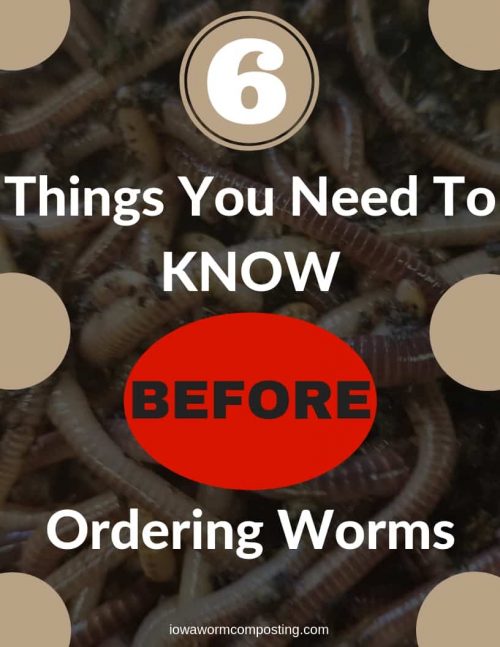
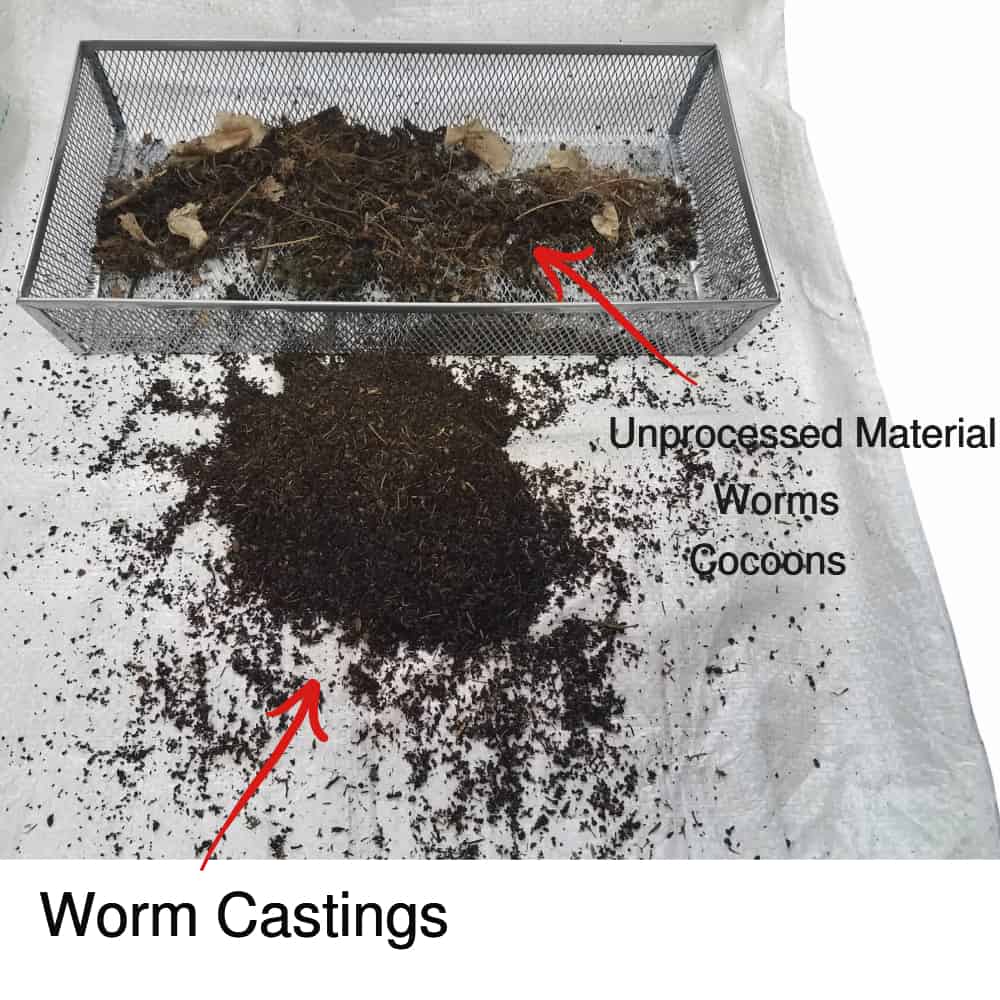
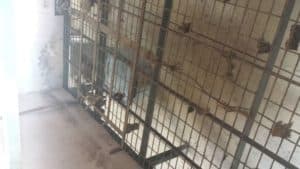
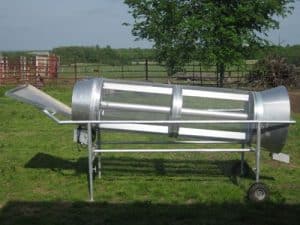
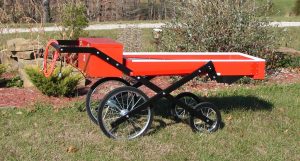
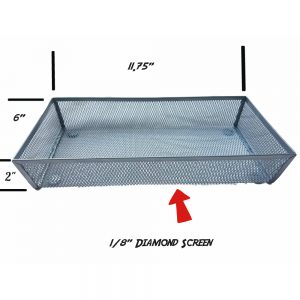
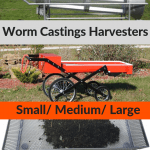
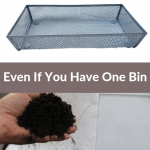
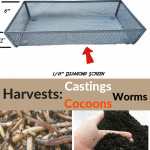
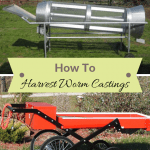
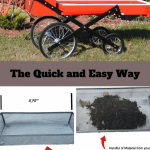
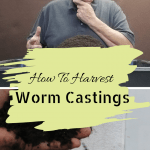
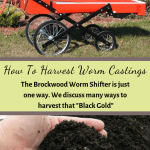
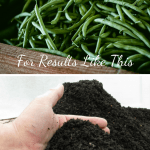
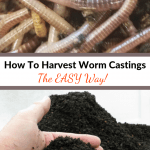
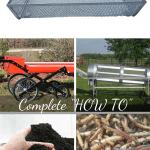
Very educational I like it.
Thank you James.
Excellent! Thank you! You have a wonderful business and I am SO happy to have found you! I can’t remember the last time I got such excellent service from anywhere!
Thank you very much Julie. We try to offer the best service around.
I have a lot of worms- mostly red wigglers- that I regularly feed in my compost bin. It is about 4 ft x 3 1/2 ft x 3 ft tall. The bottom of the bin is pretty well processed, and is mostly black compost or castings at this point. Until winter (in Chicago area), I bury the food scraps and other greens and browns/chopped dried leaves about 1 ft down in the bin, which is where the majority of worms congregate. I do not have a door in the lower part of the bin, so removal of compost and/or castings must be taken out from the top. How can I separate castings from compost from worms in my setup? Also, how do I tell the difference between castings and finished compost?
Your video on separating castings in a worm bin was helpful. Thank you for your response to above.
At some point in time, you are going to have to empty your bin to harvest. That would be a good time to modify your current bin to make harvesting easier. A door at the bottom would be a good idea. You did not say what type of container the worms are housed in. If easy modification is not possible…you might consider putting your worms in a homemade CFT that would make castings harvest easier. Worm castings are brown or black and very granular. You can assume that the material in the bottom half of the bin is mostly worm castings. Hope this helps you out. Rick
This is Becky. I’ve tried all day to send you 3 pictures of my ventilation problem in my 3 buckets. The email has not sent & I’ve sent 2x’s. So….I think I’ve figured out how I’ll do it. Thank you so much for you input in your previous emails.
Happy to help
What’s the cost of the screen and how will I order?
The cost of the screen is 26.64 with free shipping. You can order on this website under the shipping tab. Thanks for visiting. Rick